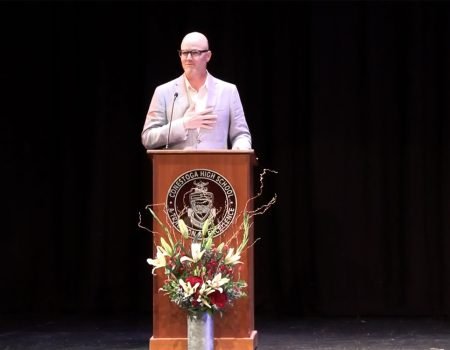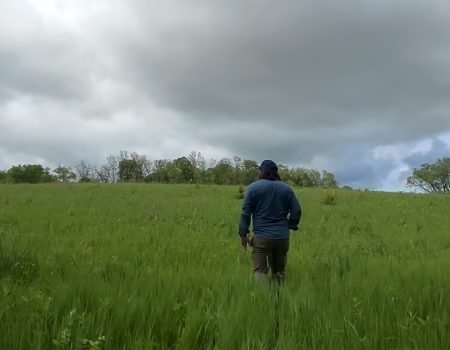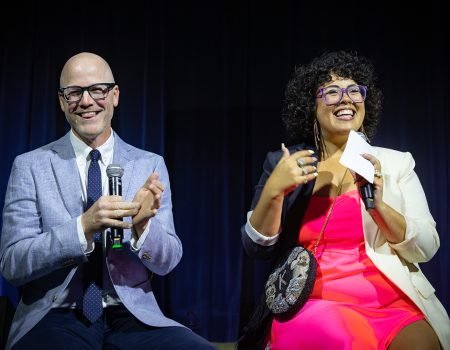This Phantom Limb (Part II)
‘What have you done?’ I thought. Then I started running.
Forget the six months of training, or — for the moment — the confidence-shattering knee injury; getting to the start of the New York City Marathon was a marathon in itself.
The Staten Island commute began when the alarm sounded at 4:30. Abbi and I packed our NYRRC-issue plastic bags with mylar blankets, PowerGel, Gatorade, Body Glide, and Vaseline, then suited up against the cold: head to toe fleece. Downstairs, the street was nearly empty, save for shadowy specs on distant street corners: marathoners.
The car service pulled up at 5:30, my mother, talkative in her first-time excitement, in the back seat. My brother walked up a few minutes later. We rode silently down the West Side Highway, past Chelsea Piers, past Ground Zero to Battery Park City. “I’ve run every inch of this city already,” I thought, “So why am I so scared?”
We stepped from the car, showed our race numbers, and climbed onto a city bus. The bus was standing-room-only, crowded with bleary-eyed, silent runners, squinting towards Staten Island through the morning darkness. Abbi, Chris and I sat in the step well, a cold draft blowing through the doors. The bus smelled of diesel fuel and Ben Gay. We roared through the Brooklyn Battery Tunnel, along the BQE, and across the Veranzano Bridge in record time. The sun had not yet risen as we stepped from the bus and entered Fort Wadsworth.
The Fort, site of the longest-continually manned military installation and now part of the Gateway National Recreational Area, is transformed into something of an Olympic Village for the Marathon. Runners are divided into three start groups: blue, green, and orange, each with its own area marked by huge colored balloons. There is a JumboTron television monitor the length of a semi, coffee and bagel service for 37,000, and a wall of port-o-john two blocks long. We spent three hours in the green zone, sipping coffee, reading magazines, and generally trying to stay warm. At 9:30, though, the tenor changed. We each began our individual preparations: donning our race gear, lubricating the chaff-prone bits, and stretching. The scurry around us became a buzz, and then a frenzy. We trecked to our individual baggage trucks — spread, almost predictably, on distant corners of the Fort — then regrouped as runners pushed towards the start.
In fact, Chris, Abbi and I were standing outside of a port-o-john when the canon signaled the start of the 2006 New York City Marathon. A Coast Guard C-130 grazed the assembly, dipping its wing over the crowd. Seconds later, my mom popped out of the john. “What was that?” she asked.
The tone took an immediate shift from the profane to the sacred as the C-130 banked out of sight. I tested my knee for the first time in a week, jogging tenderly towards the start amidst a sea of discarded sweat pants and blankets, each capable of spelling ruin. All around me, runners were communicating excitement in every language. I, in contrast, was consumed with fear. I hadn’t crossed the start, and already I was doubting my knee. As we passed the review stands, Bruce Springsteen’s “Born To Run” blaring, I felt myself tear up. I wasn’t just scared, I was terrified. ‘What have you done?’ I thought. Then I started running.
The Verrazano Bridge constitutes the first two miles of the Marathon. It really is a beautiful view: New York Harbor and Manhattan to the left, the Atlantic to the right. And yesterday was an especially beautiful fall day. Still, I was treading lightly on my right leg, barely raising my knee and shuffling tenderly. With 37,000 runners, though, the bridge begins to tremble and shake. My footfalls, then, were greeted by the bridge’s rising. Partnered with the stop-and-go of photo takers, clumps discarded clothing, and the variety of runner’s paces, I was tight as a drum, viciously guarding myself against every variable.
There is a tendency to meet the cheers Brooklyn with equal enthusiasm, but I was resolved to ignore the crows, conserve my energy, and keep my focus. I don’t think I said a word until updating Abbi around the eight-mile mark. “Well,” I said, “I wouldn’t say it hurts, but it is awfully tight.” I gained confidence as we climbed through the narrow, cacophonous streets of Williamsburg. For the first time, I offered a prediction to Abbi. “If I can maintain this through eighteen,” I said, “I just may be able to pull it off.”
Despite the dozen or more bands along the route, one song kept me company the whole way: The Envy Corps “Rhinemaidens.” It was such cool comfort, such a steady companion, that I passed the miles composing a letter of thanks and singing…
‘Dear Envy Corps,’ I thought.
Then I sang, “I met you in the middle of a rain cloud / I had just received the final blow knockout / You my smelling salt by way of sea.”
Then I thought, ‘You guys would have no way of knowing it, but you helped me through the NYC Marathon.’
Then I sang again, “It seems I’ve finally reattached this phantom limb /
Twitchin in the place where it had always been / Pins and needles feel like cotton.”
My confidence was soon met with doubt as I struggled through mile ten. As the crowd thinned, my fatigue began to make notice. My right leg began to feel prosthetic. Worse, in guarding my right knee from impact, I put additional pressure on my left, and my right hip. What hurts at mile ten can only kill by mile twenty. Abbi and I paused to stretch a few minutes as we approached the Pulaski Bridge, then carried on towards Queens.
* * *
The 59th Street Bridge is its own special challenge. It lies between miles fifteen and sixteen. It is the second greatest elevation gain of the course. It is utterly without crowd support, and thus bone silent. It is the lower level, so it is dark. Still, it’s wind whipped. Worse, it concludes on First Avenue, the densest, loudest, drunkest thicket of spectators on the course. I’ve blown my race there more than once. ‘Not this year,’ I though, brazenly tuning out the throngs of rabid fans. “Laugh because you know you’re free,” I sang, “For the time being.”
* * *
“Let’s get this shit over with,” Abbi said. I could tell tears were building beneath her sunglasses as we pushed over the Madison Avenue Bridge into Manhattan. “Four more,” I said. “Four more.”
In Marcus Garvey Park in Harlem (a series of turns that becomes tricky with exhaustion and massive joint pain), I began singing U2’s “One.” Out loud. “Is it gettin’ better? Or do you feel the same?” At the moment, with the light through the trees and the flavor of jazz and gospel in the air, it felt like a hymn. Soon, we turned south on Fifth Avenue. The Empire State Building stood dead ahead, glistening beneath a pure, blue sky in the afternoon sun. I smiled, and offered a few high fives. I knew I could make it.
Abbi, though, was not so certain. From the northeast corner of Central Park, the Marathon course climbs slowly and steadily up Fifth Avenue to the Engineer’s Gate at 89th Street. We’d run the same stretch just six weeks prior. But with twenty-two miles under our belts, it was transformed. “Top of the hill,” I said, “And we’re done.”
The pads of my feet felt as though they’d been beaten with hammers. My right hip felt as though it was dislocated. My left knee felt worse than my right. Still, my legs moved me forward as if on autopilot. Dusk fell in half-light on the falling leaves, and the crowd pushed us on. I raised a fist every time someone shouted out my name. “C’mon Benjamin Wagner Dot Com!” Sometimes (“I get it! I’ll go to the web site!”), I even smiled.
Abbi, though, was suffering. She flashed our secret hand signal — the number two — to indicate she needed me to slow down 2%. “I’ll give you three,” I said as we climbed towards Central Park South. We slowed, and maintained; we knew the end was within reach.
In the shadows of Central Park South, Abbi and I found ourselves split up by the dense and variable throngs of runners. Some were sprinting for home, others were stumbling. We continued picking up the pace, her on the south side of the street, me on the north. We kept each other in the periphery and then, as the JumboTron that marks the southeast corner of the park came into sight, turned to each other and smiled. It was then that we knew.
Abbi and I crossed the finish, hands held high, in 4:38:17.
* * *
Even now, some twenty-eight hours later, it’s difficult to remember just what I was thinking through each elapsed mile, or what I was feeling with each pained footfall. The Marathon is half physiology, half psychology. It is a constant struggle, a focused battle, a team effort.
In the end, I reattached this phantom limb, and ran. In the end, I sang songs to spite the devil. In the end, I persisted. And that’s how I found out who I really am.



